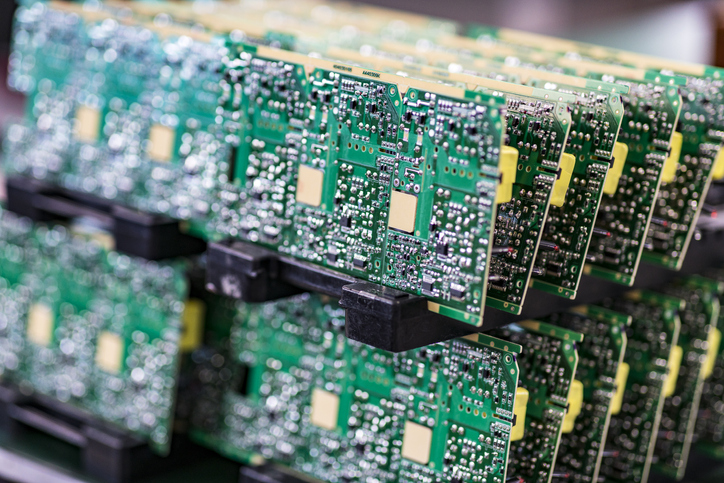A Look at Agile PCB Development: Industry Use Then vs Now
Printed circuit boards (PCBs) have been instrumental in the rapid advancement of technology since their introduction in the 1940s. PCBs...

Mining operations today rely heavily on precise, real-time data to ensure safety and efficiency. Printed circuit board (PCB) sensors have become essential tools, providing critical insights into environmental and operational conditions. From tracking gas levels to monitoring equipment health, SMD PCBs allow mining teams to detect potential hazards and optimize productivity, making them indispensable in challenging mining industry conditions.
SMD PCBs are the backbone of mine monitoring systems, enabling sensors to detect environmental and operational conditions in real time. PCB sensors are designed to endure the extreme environments commonly found in mining. Key applications include tracking:
PCB sensors detect dangerous gases such as methane, carbon monoxide, and sulfur dioxide. These gases can accumulate in mining environments, posing risks to worker health. Air quality PCBs, such as those used in gas detector systems, help detect hazardous concentrations, triggering alarms and evacuations when levels are unsafe. The PCBs in these sensors allow for miniaturization, meaning the devices are less intrusive and more durable, which is essential in confined mining spaces.
Temperature-sensitive PCBs monitor underground temperatures and humidity levels. These environmental factors can influence mining safety and equipment performance. For instance, excessive heat or humidity can damage sensitive mining equipment, increasing maintenance costs and downtime.
PCB-equipped pressure sensors monitor hydraulic and pneumatic systems in mining, detecting pressure fluctuations that signal potential equipment issues or safety hazards. Compact and durable, these sensors provide reliable, continuous monitoring in harsh conditions, helping to prevent failures and ensure safe operations.
Vibration sensors and other mining monitoring systems use PCB sensors to assess machinery health. SMT accelerometers are crucial for monitoring rotating equipment, such as conveyor belts, drill rigs, and ventilation fans. These sensors detect subtle changes in vibration patterns, which can indicate early signs of wear and tear, imbalance, or misalignment. The compact size and durability of SMT accelerometers make them ideal for integration into tight spaces and harsh environments common in mining operations.
By monitoring vibrations, noise levels, and other mechanical indicators, PCBs help in preventive maintenance, alerting operators to issues before they escalate. This improves overall productivity and reduces the likelihood of costly breakdowns.
SMD PCB sensors bring numerous benefits to mining operations, making them ideal for monitoring in harsh and challenging environments. Their compact design, durability, and cost-effectiveness enable real-time tracking of essential safety and equipment data, ensuring operational efficiency and worker protection.
Surface-mounted device (SMD) PCBs have revolutionized mining applications by offering a compact and durable design. Unlike traditional PCBs, SMD PCBs allow components to be soldered directly onto the board’s surface. This design is well-suited for mining environments, where limited space and enhanced durability are critical.
SMD technology, a popular choice for PCB fabrication, offers several advantages for mine monitoring applications:
Get Your Specs Right with SMD Size ChartsThe correct SMD resistors and capacitors are crucial for precise, reliable PCB design. This comprehensive guide provides detailed size charts, helping engineers match the right components to their project needs. With easy-to-follow tables and essential specifications, this resource simplifies choosing components, ensuring optimal performance and efficiency in your PCB assemblies. Download the guide to streamline your design process and boost your project’s success: |
One of the most critical aspects of PCBs in mining is enhancing safety. The real-time data provided by PCB sensors helps mining companies make timely decisions that can prevent accidents.
PCBs enable rapid data processing and transmission, which is essential in emergencies. For example, if a gas detector senses an unsafe level of methane, the sensor’s PCB instantly sends an alert to the control room, allowing for swift response actions. Real-time data systems reduce human error and enable faster interventions, which can save lives.
PCB sensors don’t just provide isolated data; they integrate into broader mine monitoring systems. This enables centralized tracking of various factors — from environmental conditions to equipment status — all within a single system. The result is a cohesive safety strategy where various data are analyzed and responded to simultaneously, making operations more streamlined and safer.
Advancements in PCB technology are benefiting the mining industry, especially as IoT and smart mining applications become more widespread.
New PCB sensors, made with advanced materials and micro-manufacturing techniques, are more sensitive and durable. They can detect subtle changes in environmental conditions or equipment status, enabling earlier identification of issues and ensuring real-time safety and efficiency.
As mining operations become increasingly digital, PCB sensors play a critical role in smart mining. The Internet of Things (IoT) allows for the connectivity of devices across the mining site, where data from PCB sensors is collected and analyzed to improve decision-making and efficiency. Smart mining also offers a way to better manage energy use, reduce waste, and lower operational costs through data-driven insights.
As the mining industry moves towards greater automation and digital integration, SMD PCB sensors are at the forefront, shaping a future of safer, smarter, and more sustainable operations. These compact, durable devices enhance safety through real-time monitoring and unlock new efficiencies with the rise of IoT and smart mining applications. As PCB technology advances, the mining sector will benefit from even greater precision and resilience, making PCB sensors a cornerstone of modern mining safety and productivity.
Stay updated on the latest advancements in PCB technology and how it’s driving innovation across various industries. Visit our blog for expert insights, in-depth guides, and updates on cutting-edge solutions that enhance safety, efficiency, and performance in even the most demanding environments.

Printed circuit boards (PCBs) have been instrumental in the rapid advancement of technology since their introduction in the 1940s. PCBs...

As the world of robotics advances, PCB manufacturing techniques have become faster and more efficient. With surface mount technology, flexible PCBs,...

The electric vehicle battery management system is a critical component in the successful operation of an electric vehicle. It plays a key role in...